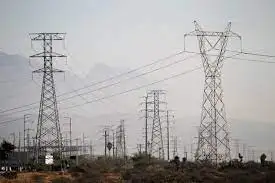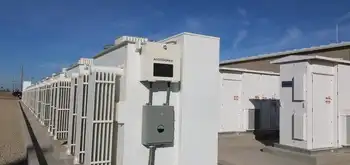UK renewable goals draws barrage of power, critics
On paper, at least, what is called the Severn Barrage will deliver a huge pulse of juice, roughly 5 percent of the nation's requirements. And it would do that without production of greenhouse gases or related pollution.
Moreover, it uses Britain's largest untapped source of power, the tidal energy of the sea along Britain's 11,000 miles of coastline. It would make the United Kingdom the leader of a growing worldwide effort to harness tidal and wave power.
But then begins a long line of question marks, raised by environmentalists, conservationists, economists and others about why this scheme — versions of which have been kicked around since 1849 — still won't work, despite the growing interest and the new legal mandate to use more renewable energy.
For conservationists, the feathers begin to fly over the nature of the Severn River Estuary — the sleeve-shaped stretch of water dividing southwestern England from southern Wales. It boasts 46-foot tides, the second-highest tidal range in the world after Canada's Bay of Fundy.
Several variations of how to tap this energy are under study. The biggest — and most favored by the government — is a 10-mile-long dam or barrage that would stretch across the mouth of the estuary between Cardiff in Wales and Weston-Super-Mare in England. Tides passing through its 240 turbines would generate 8.6 gigawatts of electricity, roughly the equivalent output of eight large coal-fired power plants.
Projects that can deliver that magnitude of power loom large in the context of the goverment's legal mandate to produce 15 percent of its primary energy, equivalent to 35 percent of its electricity, from renewable sources by 2020. It is a target that it is going to find very hard to hit. At present, the country gets barely 5 percent of its electricity from renewable sources — primarily onshore wind.
"Climate change may well be the biggest threat facing mankind and wildlife. But this barrage proposal would simply be throwing the baby out with the bathwater," said Sean Christian, a member of the Royal Society for the Protection of Birds' Severn Estuary Project.
"Do not get me wrong. We are not at all against trying to exploit the potential of the Severn and of wave and tidal power in general. But we have got to make sure that we get it right first time, and this proposal goes nowhere near that. If we can get it right in the Severn, it can be a role model for other estuaries," he added.
The well-organized and very vocal campaign against the Cardiff-Weston barrage argues that the estuary is a vital rest and recuperation area for nearly 70,000 migrating birds and that the 10-mile wall would block the passage of some 100 species of fish, including migrating salmon, sea trout and eels.
Because the area is subject to EU habitat protection orders, there would be legal challenges if the barrage gets the green light from government next year. Gordon James of the environmental lobby group Friends of the Earth asserts that "by law, they would have to find or create an equivalent area of equivalent habitat conditions somewhere else."
Economists have been drawn to this debate by the sheer size of the project and its power output. It would be the biggest construction project in the world and by far the largest renewable energy project in history.
Its initial cost calculations — which have already risen by 25 percent in a little over a year — have put a construction price tag of nearly £21 billion (US$34.6 billion) on the barrage. Assessments of the potential economic, social, environmental and ecological damage it is likely to cause will likely take it higher.
Because it is designed only to generate power on the ebb tide, it would be producing electricity in just two three-hour bursts in every 24 hours. It would require new high-capacity transmission lines to rapidly distribute power along the nation's power grid, where supply must always be carefully balanced against demand to avoid blackouts, since such large amounts can't be stored.
Michael Grubb worries about that. He is an influential climate economist and a member of the country's Committee on Climate Change, which was set up by act of Parliament last year to monitor the government's progress in achieving its own legally binding target of cutting the country's carbon emissions by 34 percent by 2020 and at least 80 percent by 2050.
"The committee doesn't think the Cardiff-Weston barrage should be ruled out automatically, but it would require a major grid upgrading... and that would add even more to the costs," he said.
The litany of problems surrounding the huge structure goes on. It would, argue opponents, permanently flood and destroy 80 percent of the intertidal feeding areas in the estuary and so change the flow of the water that it could cause massive silting and impede ship traffic from the major ports stuck behind it.
The Severn Bore, or the scenic tidal wave that sweeps up the Severn River several times a year, is a world-renowned spectator attraction as well as a draw to thousands of surfers and white-water enthusiasts from around the world who come to ride its giant back. The barrage could end the bore and perhaps cause more flooding in a heavily populated area already prone to inundation.
Advocates point to the fact that, unlike other tidal or wave energy schemes, barrages do work. They point to the La Rance Barrage in northern France, which has been generating electricity since 1966.
Critics, however, note that La Rance amounts to a miniature of the Severn project. It is less than a half-mile long and produces just 240 megawatts of electricity. It is also in a river valley, not a sprawling floodplain like the Severn, and therefore, they say, cannot be considered in the same ecological breath.
"The Severn Estuary is of major international significance, and it is going to become more, not less, as climate change impacts Europe," said RSPB's Christian. "The Dutch and the Canadians both have experience with big river estuaries like the Severn, and they both think we are mad even considering a barrage across it."
Like the Committee on Climate Change, the Renewable Energy Association (REA) and the government's advisory body, the Sustainable Development Commission (SDC), both advocate exploitation of wave and tidal power and say that despite its more obvious shortcomings, like price and potential environmental damage, the Severn Barrage should not be dismissed out of hand but should be the subject of detailed impact analysis. A study on that is under way and is due to report in 2010.
"The REA thinks that in order to achieve our targets, we need big projects like the Severn Barrage," said Stephanie Merry of the REA industry lobby group. "The danger is that if the government thinks this is the silver bullet, it may well redirect all its money into that and away from other wave and tidal."
The SDC has calculated that wave and tidal combined could eventually produce about 10 percent of Britain's electricity. Others put it as high as 15 percent. But while onshore wind power has developed relatively rapidly in recent years, with the much more expensive offshore just getting under way, wave and tidal power has been the poor relation by a long way.
While Britain prides itself as being a world leader in inventing wave and tidal generation technologies, the industry has been held back by risk-averse investors deeply wary of the huge costs of development, the difficulty of grid integration and the lack of central funding for wave hubs — sub-sea connection devices that allow low-cost testing of generators under development.
That is starting to change — at least at the technological end. But it remains a massive task for the small companies developing devices to try crossing the yawning funding gap that prevents firms from moving from prototype to full-scale testing and eventual commercialization.
Related News

Energy prices trigger EU inflation, poor worst hit
BERLIN - Higher energy prices, including for natural gas, are pushing up electricity prices and the cost of living for households across the EU, prompting governments to cut taxes and provide financial support to the tune of several billion euros.
A series of reports published by Cambridge Econometrics in October and November 2022 found that households in EU countries are spending much more on energy than in 2020 and that governments are spending billions of euros to help consumers pay bills and cut taxes.
In France, for example, the poorest households now spend roughly one-third more on energy than in 2020. Between…




